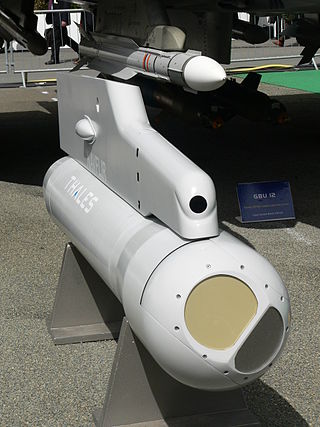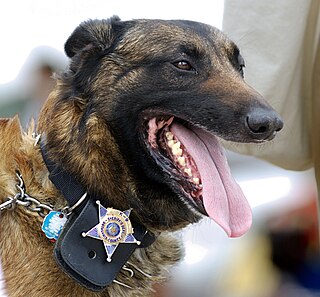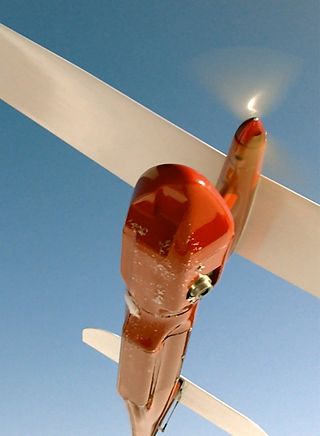
The Fourth Amendment to the United States Constitution is part of the Bill of Rights. It prohibits unreasonable searches and seizures and sets requirements for issuing warrants: warrants must be issued by a judge or magistrate, justified by probable cause, supported by oath or affirmation, and must particularly describe the place to be searched and the persons or things to be seized.

Forward-looking infrared (FLIR) cameras, typically used on military and civilian aircraft, use a thermographic camera that senses infrared radiation.
Katz v. United States, 389 U.S. 347 (1967), was a landmark decision of the U.S. Supreme Court in which the Court redefined what constitutes a "search" or "seizure" with regard to the protections of the Fourth Amendment to the U.S. Constitution. The ruling expanded the Fourth Amendment's protections from an individual's "persons, houses, papers, and effects", as specified in the Constitution's text, to include any areas where a person has a "reasonable expectation of privacy". The reasonable expectation of privacy standard, now known as the Katz test, was formulated in a concurring opinion by Justice John Marshall Harlan II.
Florida v. Riley, 488 U.S. 445 (1989), was a United States Supreme Court decision which held that police officials do not need a warrant to observe an individual's property from public airspace.
California v. Greenwood, 486 U.S. 35 (1988), was a case in which the Supreme Court of the United States held that the Fourth Amendment does not prohibit the warrantless search and seizure of garbage left for collection outside the curtilage of a home.
United States v. Leon, 468 U.S. 897 (1984), was a United States Supreme Court case in which the Court established the "good faith" exception to the Fourth Amendment exclusionary rule.
In United States constitutional law, expectation of privacy is a legal test which is crucial in defining the scope of the applicability of the privacy protections of the Fourth Amendment to the U.S. Constitution. It is related to, but is not the same as, a right to privacy, a much broader concept which is found in many legal systems. Overall, expectations of privacy can be subjective or objective.
Illinois v. Caballes, 543 U.S. 405 (2005), is a decision by the Supreme Court of the United States in which the Court held that the use of a drug-sniffing police dog during a routine traffic stop does not violate the Fourth Amendment to the U.S. Constitution, even if the initial infraction is unrelated to drug offenses.
Smith v. Maryland, 442 U.S. 735 (1979), was a Supreme Court case holding that the installation and use of a pen register by the police to obtain information on a suspect's telephone calls was not a "search" within the meaning of the Fourth Amendment to the United States Constitution, and hence no search warrant was required. In the majority opinion, Justice Harry Blackmun rejected the idea that the installation and use of a pen register constitutes a violation of the suspect's reasonable expectation of privacy since the telephone numbers would be available to and recorded by the phone company anyway.
California v. Ciraolo, 476 U.S. 207 (1986), was a decision by the Supreme Court of the United States in which the Court held that aerial observation of a person's backyard by police, even if done without a search warrant, does not violate the Fourth Amendment to the U.S. Constitution.
United States v. Knotts, 460 U.S. 276 (1983), was a United States Supreme Court case regarding the use of an electronic surveillance device. The defendants argued that the use of this device was a Fourth Amendment violation. The device in question was described as a beeper that could only be tracked from a short distance. During a single trip, officers followed a car containing the beeper, relying on beeper signal to determine the car's final destination. The Court unanimously held that since the use of such a device did not violate a legitimate expectation of privacy there was no search and seizure and thus the use was allowed without a warrant. It reasoned that a person traveling in public has no expectation of privacy in one's movements. Since there was no search and seizure there was not a Fourth Amendment violation.

United States v. Pineda-Moreno, 591 F.3d 1212 (2010) was a 2010 Ninth Circuit Court of Appeals case regarding the use of GPS devices. The court ruled that a placing a GPS tracking device a personal vehicle without a warrant did not violate a suspect's Fourth Amendment rights, even if the vehicle was parked in the defendant's driveway at the time the device was placed. The case was reversed and remanded by the United States Supreme Court in light of United States v. Jones.
United States v. Jones, 565 U.S. 400 (2012), was a landmark United States Supreme Court case in which the court held that installing a Global Positioning System (GPS) tracking device on a vehicle and using the device to monitor the vehicle's movements constitutes a search under the Fourth Amendment.
The Geolocation Privacy and Surveillance Act was a bill introduced in the U.S. Congress in 2011 that attempted to limit government surveillance using geolocation information such as signals from GPS systems in mobile devices. The bill was sponsored by Sen. Ron Wyden and Rep. Jason Chaffetz. Since its initial proposal in June 2011, the GPS Act awaits consideration by the Senate Judiciary Committee as well as the House.
In United States Constitutional Law, a minimally intrusive/invasive warrantless search is a type of search that does not breach the boundaries of the property and is performed without any prerequisite search warrant. These searches are contested regularly in courts, and have been ruled for and against under different circumstances. The primary debate concerns the method in which the search is conducted, and also the area being searched. Issues concerning warrantless search and subsequent seizure are always of local concern, because they are a community law enforcement issue as well as a national law issue.

Florida v. Jardines, 569 U.S. 1 (2013), was a United States Supreme Court case which resulted in the decision that police use of a trained detection dog to sniff for narcotics on the front porch of a private home is a "search" within the meaning of the Fourth Amendment to the United States Constitution, and therefore, without consent, requires both probable cause and a search warrant.
Maryland v. King, 569 U.S. 435 (2013), was a decision of the United States Supreme Court which held that a cheek swab of an arrestee's DNA is comparable to fingerprinting and therefore, a legal police booking procedure that is reasonable under the Fourth Amendment.
Dow Chemical Co. v. United States, 476 U.S. 227 (1986), was a United States Supreme Court case decided in 1986 dealing with the right to privacy and advanced technology of aerial surveillance.
Carpenter v. United States, 585 U.S. ___, 138 S.Ct. 2206 (2018), is a landmark United States Supreme Court case concerning the privacy of historical cell site location information (CSLI). The Court held that the government violates the Fourth Amendment to the United States Constitution when it accesses historical CSLI records containing the physical locations of cellphones without a search warrant.

The aerial surveillance doctrine is the legal doctrine in the United States of America that under the Fourth Amendment, aerial surveillance of an individual’s property does not inherently constitute a search for which law enforcement must obtain a warrant. Courts have used several factors–sometimes only one or a few, other times many or all of them–to determine whether the surveillance in question is a search in violation of one’s constitutional rights: the object of the surveillance, the technology employed, the duration of the surveillance, scope of aggregated information, and the vantage point from which the surveillance is conducted.







